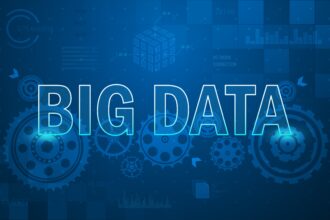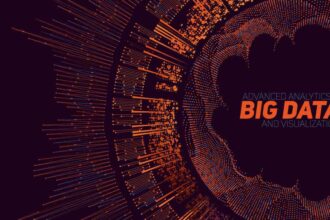One of the most important elements in the evolution of the education system is the ability to make informed conclusions about the need to change approaches that are used and the actions that are taken. According to a 2015 whitepaper published in Science Direct, big data is one of the most disruptive technologies influencing the field of academia.
The educational system continuously creates and accumulates a significant amount of data, and the question of the systematic work with these data by a wide range of subjects of education today can be called one of the most important. Big Data can be a powerful tool for transforming learning, rethinking approaches, narrowing longstanding gaps, and tailoring experience to increase the effectiveness of the educational system itself. Now it has become so popular that you can even get data structure assignment help from professionals. In the article, you will find a number of areas where Big Data in education can be applied.
To Begin with…
The integration of Big Data in education relies on the analytics technology in the educational system, which includes the measurement, collection, analysis, and presentation of structured and unstructured data of huge volumes about students and the educational environment in order to understand the features of the functioning and development of the educational system. Historically, the education system has accumulated a significant amount of data. Any concerns over how affordable it is to start processing a large amount of data is removed due to the advent and expanded use of information and communication technologies.
Many people are debating the impact data technology will have on academia. Forbes contributor Kalev Leetaru said that big data might make academia nearly irrelevant. This is a bit of an exaggeration, but he is correct that big data is changing the future of the industry.
Big Data Internal Impact
An important area of research is issues related to internal interaction. Predicting academic performance is one of the key research topics in Big Data in education. The relationship between performance parameters and factors for predicting performance is involved in complex nonlinear relationships, so the areas of data collection should be comprehensive.
Thus, at present, the development of Big Data technology in education is described through many approaches and models, which prevents the systematic accumulation of Big Data for the development of the education system.
Big Data Management Process Diagram in Education
To structure the Big Data management processes in education, five interrelated groups of processes can be distinguished:
1. Goal setting
Determining the purpose and objectives of the study.
2. Planning
A selection of information sources, data acquisition procedures, information processing algorithms.
3. Data collection
Organization of data collection in a single database.
4. Analysis of Indicators
Comparison of the distribution of teachers in the region by age in comparison with the normal distribution in the context of the taught subject.
5. Adjustment
At the stage of data collection, the development of regulatory measures to collect missing data from educational organizations to achieve representativeness of the sample. After the adoption of the final report, the broadcasting of negative trends to regional and municipal authorities, approval and implementation of the action plan for training young personnel for the education system for the coming years.
6. Completion
Fixation of the identified problems in the final report.
Student Model Based on Big Data
A student model based on Big Data can be built through data collection in the following system of nine directions, allowing them to be processed as Big Data.
1. Used educational content
Indicators of interaction with educational content during the study: navigation, answers to assignments, types of errors, time characteristics of assignments and more.
2. Interpersonal communications
The communication parameters of the student with other subjects of education: classmates, teachers, parents, and others.
3. Training strategy
Analysis of the results of the integrity of the review of problem situations, methods of forecasting and planning for their resolution.
4. Background
Indicators of past student performance, revealing the assimilation of knowledge, skills and scientific ideas.
5. Media Education
Indicators of the content used from the media – television, the press, radio, cinema, video, the Internet, including data from social networks.
6. Decision making
Indicators of the student’s determination, including the selection of optimal solutions to the problem and the assessment of the consequences of the selected solutions.
7. Sociocultural environment
The set of indicators of the student’s social space, such as social structure, demographic information, the system of production relations, material living conditions, the nature of the course of production and social processes, family, relatives, friends.
8. Nearest condition
The indicators of the nearest time horizon characterizing the student’s actions, situational and random factors, emotional state, sleep quality, nutrition indicators.
9. Destructive behavior
Indicators characterizing gross, obvious and systematic violations of the basic rules of behavior both in the classroom and in the immediate environment.
What is the Real Impact of Big Data on Academia?
The article identifies the distinguishing features of Big Data technology, structured the processes of system management, directions of data collection in education and determined the properties of the collected Big Data database in education. The practical use of the research results allows implementing Big Data in the education management system by identifying and taking into account the laws of the education system. We hope that after reading the article you understand the importance of Big Data in education.











